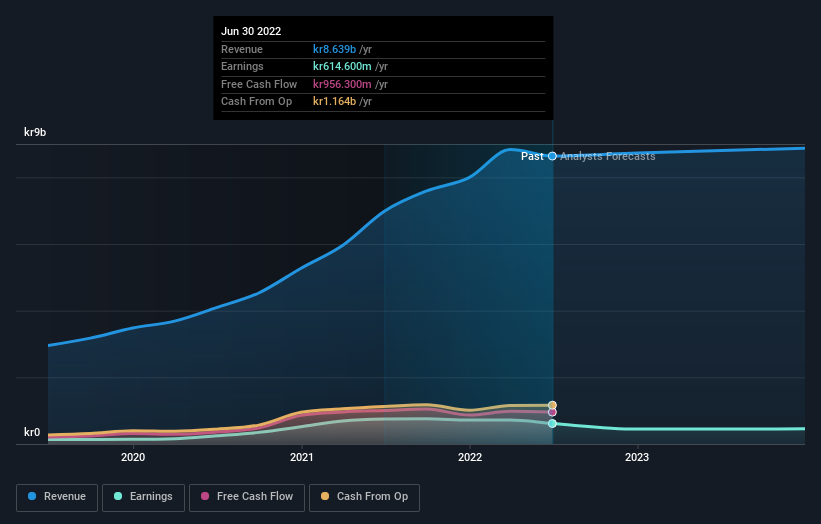
AddLife AB (publ) (STO:ALIF B), might not be a large cap stock, but it saw significant share price movement during recent months on the OM, rising to highs of kr175 and falling to the lows of kr112. Some share price movements can give investors a better opportunity to enter into the stock, and potentially buy at a lower price. A question to answer is whether AddLife's current trading price of kr112 reflective of the actual value of the small-cap? Or is it currently undervalued, providing us with the opportunity to buy? Let’s take a look at AddLife’s outlook and value based on the most recent financial data to see if there are any catalysts for a price change.
Check out the opportunities and risks within the SE Life Sciences industry.
What Is AddLife Worth?
Good news, investors! AddLife is still a bargain right now. My valuation model shows that the intrinsic value for the stock is SEK171.65, which is above what the market is valuing the company at the moment. This indicates a potential opportunity to buy low. However, given that AddLife’s share is fairly volatile (i.e. its price movements are magnified relative to the rest of the market) this could mean the price can sink lower, giving us another chance to buy in the future. This is based on its high beta, which is a good indicator for share price volatility.
Can we expect growth from AddLife?

Future outlook is an important aspect when you’re looking at buying a stock, especially if you are an investor looking for growth in your portfolio. Buying a great company with a robust outlook at a cheap price is always a good investment, so let’s also take a look at the company's future expectations. However, with an extremely negative double-digit change in profit expected next year, near-term growth is certainly not a driver of a buy decision. It seems like high uncertainty is on the cards for AddLife, at least in the near future.
What This Means For You
Are you a shareholder? Although ALIF B is currently undervalued, the negative outlook does bring on some uncertainty, which equates to higher risk. I recommend you think about whether you want to increase your portfolio exposure to ALIF B, or whether diversifying into another stock may be a better move for your total risk and return.
Are you a potential investor? If you’ve been keeping an eye on ALIF B for a while, but hesitant on making the leap, I recommend you dig deeper into the stock. Given its current undervaluation, now is a great time to make a decision. But keep in mind the risks that come with negative growth prospects in the future.
If you want to dive deeper into AddLife, you'd also look into what risks it is currently facing. Our analysis shows 3 warning signs for AddLife (1 is a bit concerning!) and we strongly recommend you look at these before investing.
If you are no longer interested in AddLife, you can use our free platform to see our list of over 50 other stocks with a high growth potential.
New: Manage All Your Stock Portfolios in One Place
We've created the ultimate portfolio companion for stock investors, and it's free.
• Connect an unlimited number of Portfolios and see your total in one currency
• Be alerted to new Warning Signs or Risks via email or mobile
• Track the Fair Value of your stocks
Have feedback on this article? Concerned about the content? Get in touch with us directly. Alternatively, email editorial-team (at) simplywallst.com.
This article by Simply Wall St is general in nature. We provide commentary based on historical data and analyst forecasts only using an unbiased methodology and our articles are not intended to be financial advice. It does not constitute a recommendation to buy or sell any stock, and does not take account of your objectives, or your financial situation. We aim to bring you long-term focused analysis driven by fundamental data. Note that our analysis may not factor in the latest price-sensitive company announcements or qualitative material. Simply Wall St has no position in any stocks mentioned.
About OM:ALIF B
AddLife
Provides equipment, consumables, and reagents primarily to healthcare sector, research, colleges, and universities, as well as the food and pharmaceutical industries.
Reasonable growth potential low.

